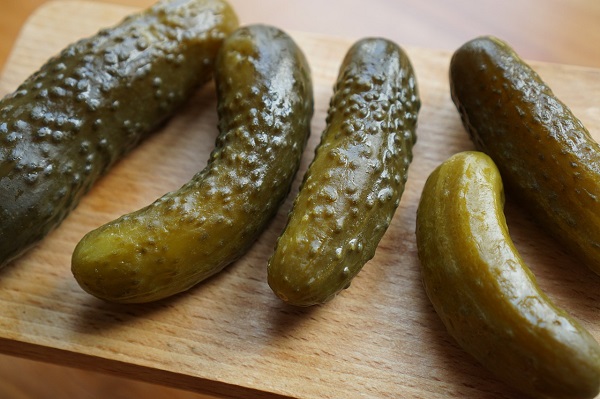Making pickles simply means that you are elevating sufficiently the acidity level of a food product to prevent harmful organisms from growing. You can make pickles of just about any fruits, vegetables, meats, or eggs. By combining water and salt, you make brine. The brine creates lactic acid, a preservative, during product fermentation. The process of making pickles is similar to that of marinating meats overnight before we cook the meats.
Safety
- Correct proportions of ingredients making up your brine are imperative for quality and safety when you are making pickles
- Follow the directions precisely when making pickles. Do not make improvisations to avoid the risks of botulism.
- Do not use homemade vinegar, as with making pickles you have to be certain that the acidity level is at least 5%.
- Do not use jars and lids from commercially canned foods for making pickles. They do not seal properly.
- Use standard canning jars with bands and lids that are in perfect condition. Although you can reuse the bands, you cannot reuse the lids.
- Dented or otherwise defective bands cannot be reused
- Refrigerated quick-processed pickles are considered safe up to six months, if the products have been fully fermented. A good example is sauerkraut.
- For every thousand feet above sea level, recipes for making pickles that call for less than 20 minutes of processing require an additional minute
- Recipes for making pickles that call for 20 minutes or more of processing require an additional two minutes
- For example, if you are at 1,000 feet above sea level, at 10 minutes processing time, set your timer for 11 minutes. At 20 minutes processing time, set your timer for 22 minutes.
- If recipes for making pickles call for less than ten minutes processing, sterilize the jars and place the products while the jars are hot.
- Set your canner so that there is a gentle boil throughout the processing time.
Relishes
- Aside from the basic spears and whole pickles, relishes are also a popular form of making pickled fruits and vegetables
- Chop the produce and place in the vinegar solution. You can add more sugar to the recipe for a sweeter relish, but do not use sugar substitutes.
Fermentation and Curing Period
- When making pickles, the fermentation and curing period will depend on the ingredients and processing system
- For example, making regular dill pickles may take about three weeks, whereas refrigerator dills may take about one week only.
- Pickles that are quickly processed (fresh pack) are brined about eight to ten hours, or overnight, then drained and covered with the seasonings and vinegar.
- Fruit pickles are usually heated in seasoned syrup made acidic with lemon juice or vinegar.








